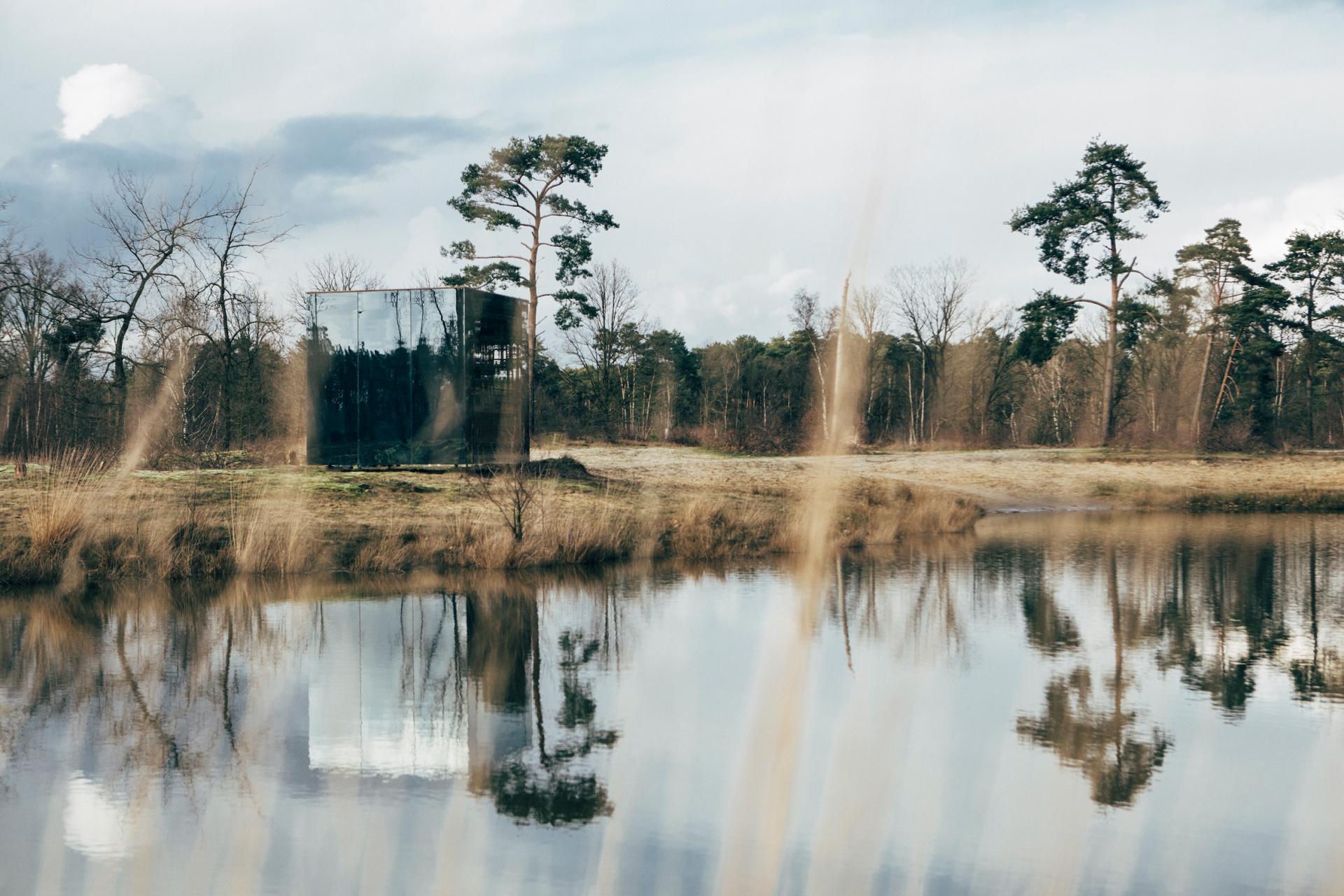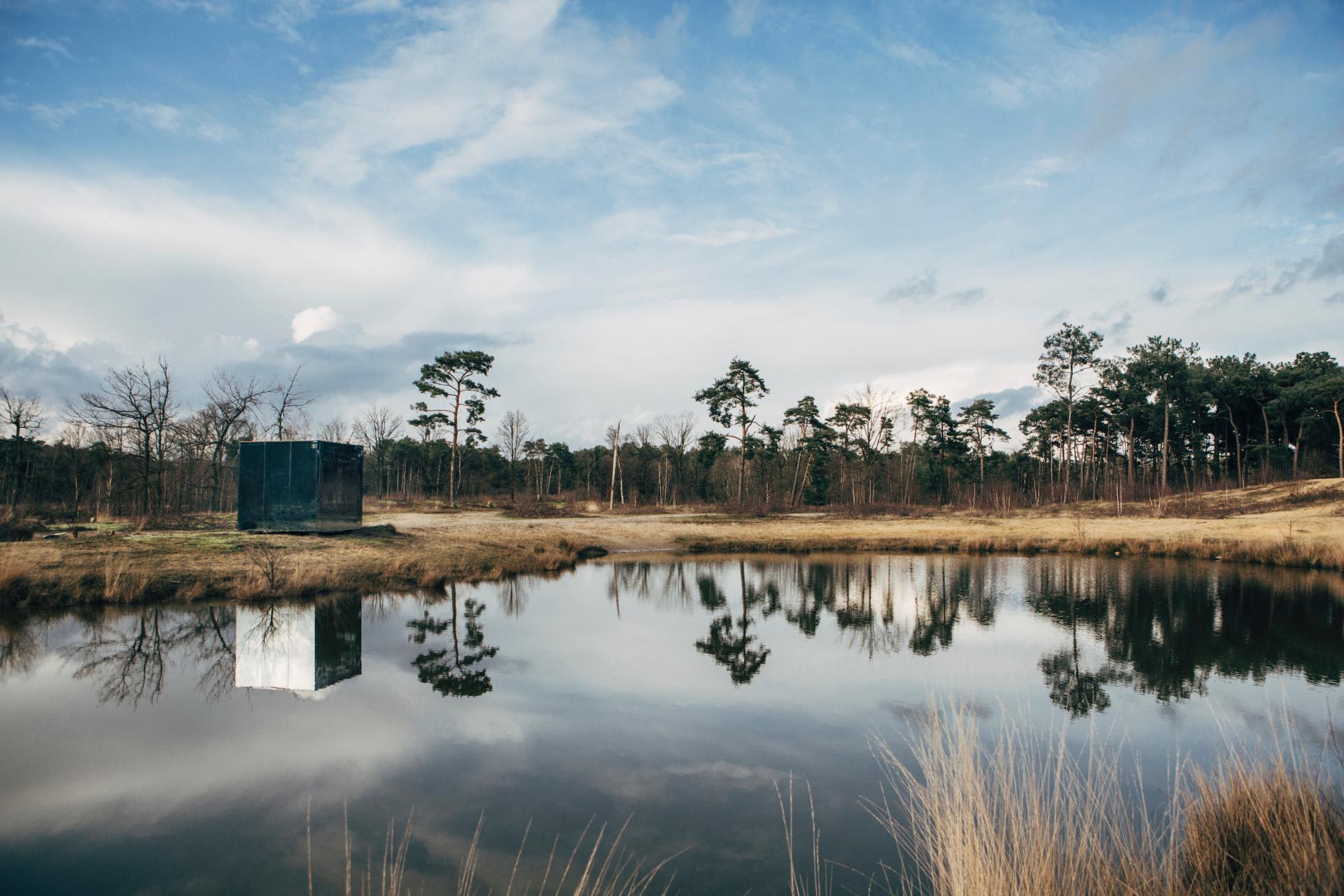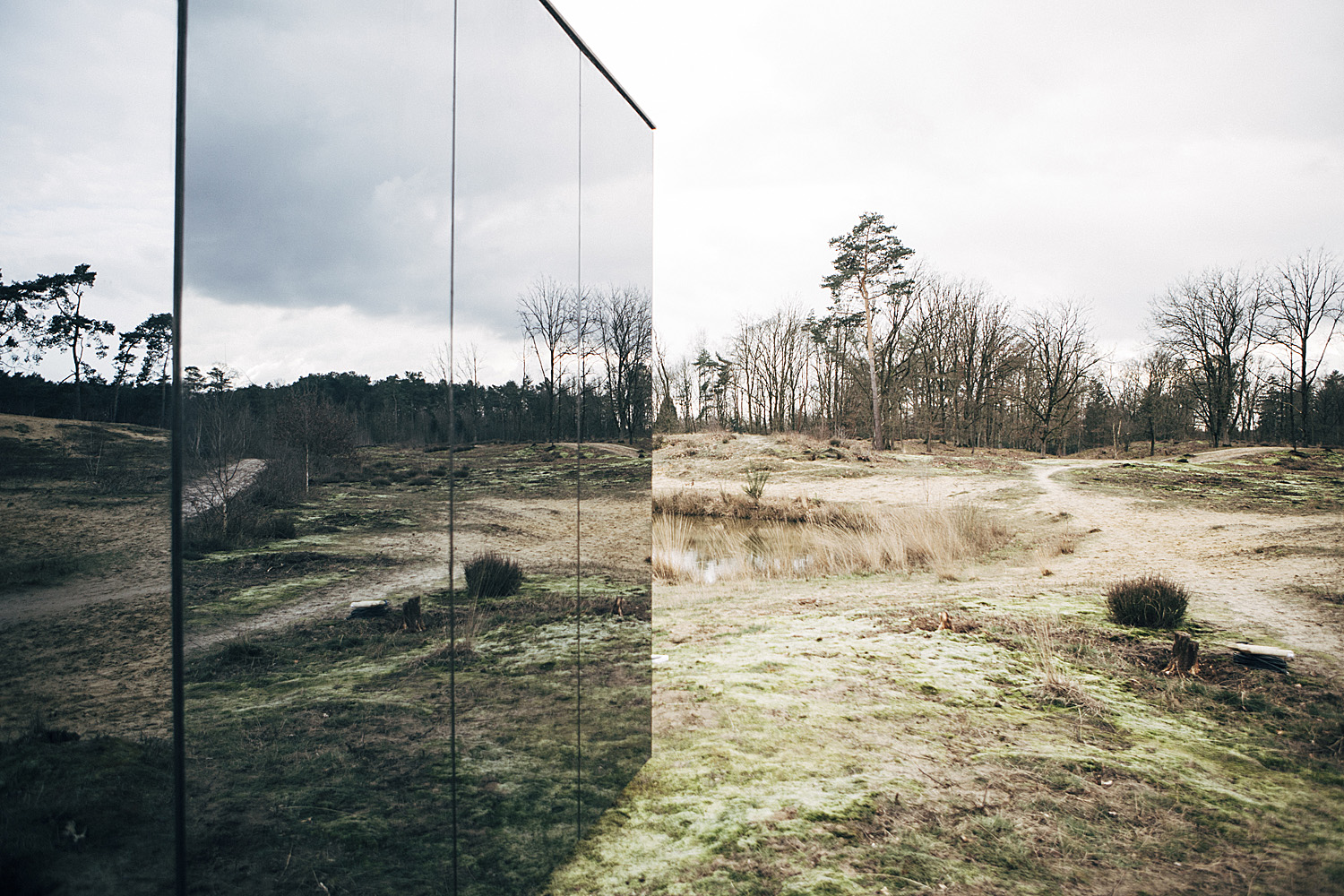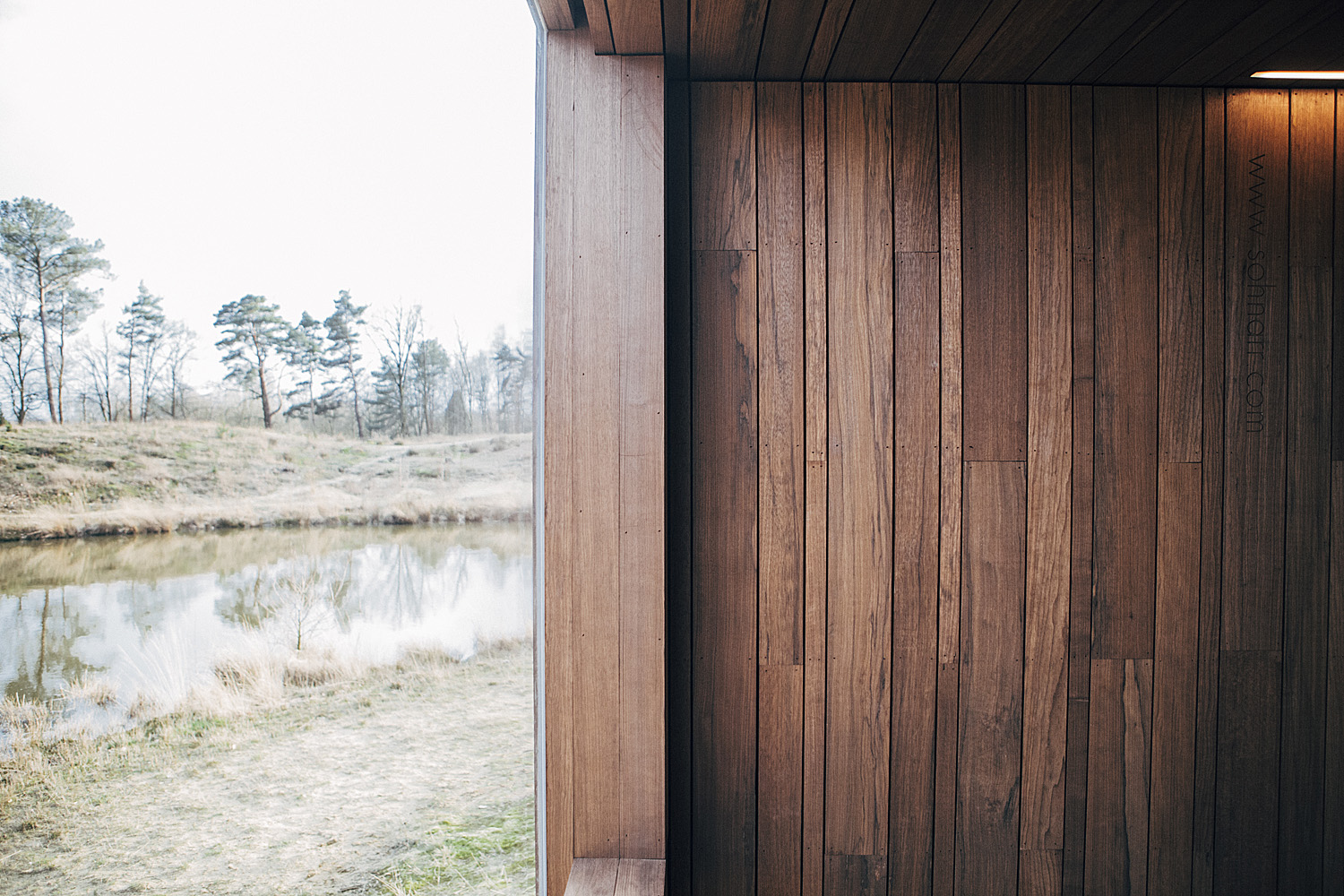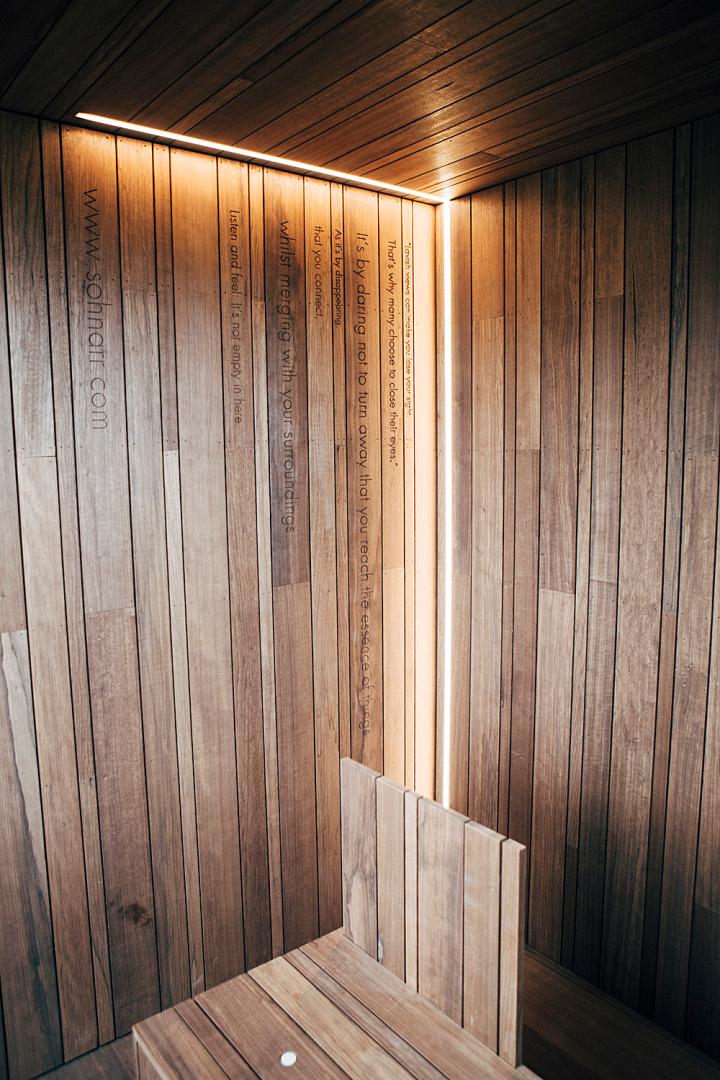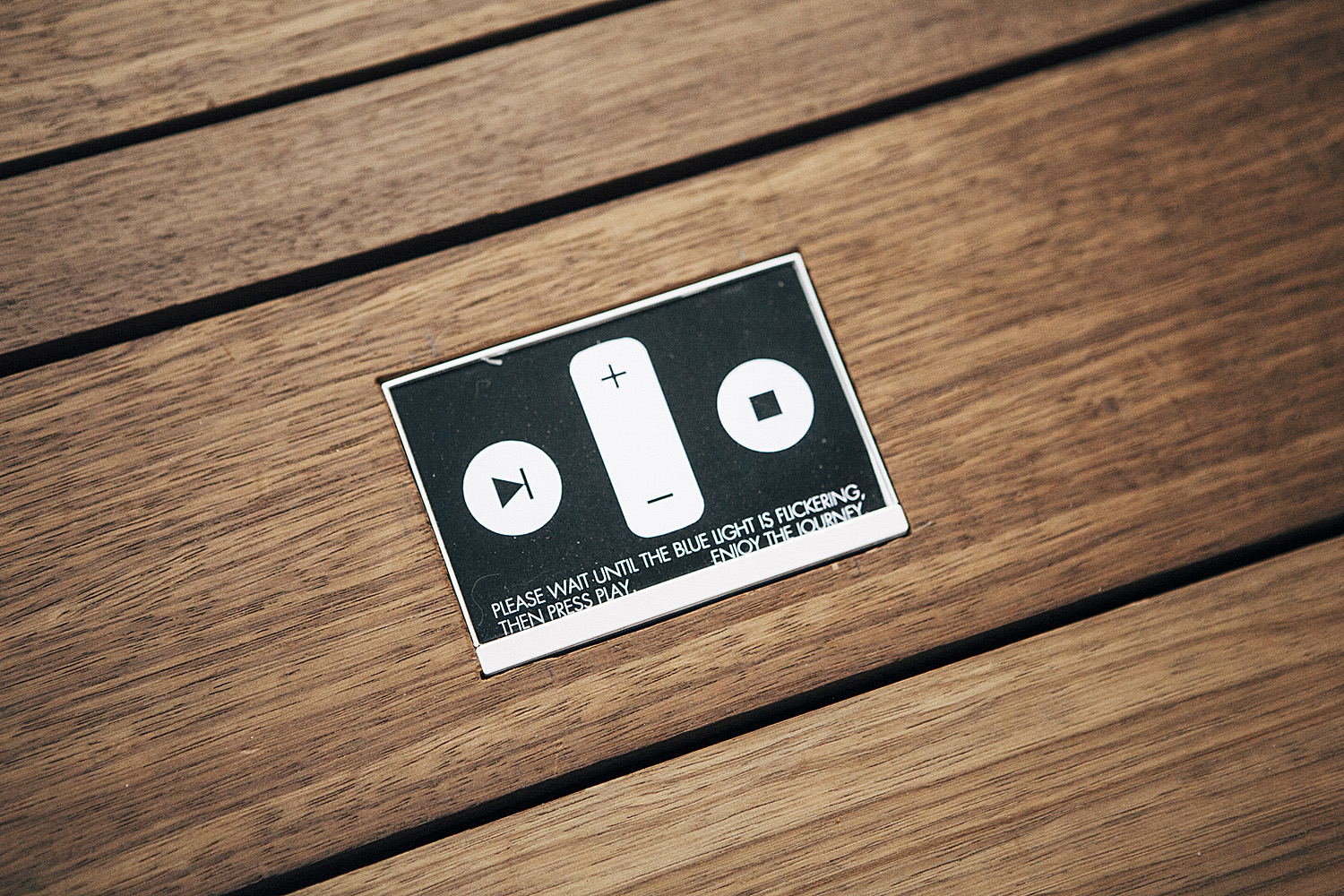The Sohnarr Sjel
Basic information
Project Title
Full project title
Category
Project Description
The Sjel is an ar(t)chitectural music installation traveling through nature to serve as a shelter, a place for contemplation and reconnection with nature. It invites individuals to take a walk into nature on their own and to give themselves permission to connect with it in a very symbolic ànd physical way: by entering a space which is merged with nature and through music inspired by nature itself. It is a place of safe introspection where solitude meets unity and the invisible becomes visible.
Geographical Scope
Project Region
Urban or rural issues
Physical or other transformations
EU Programme or fund
Which funds
Description of the project
Summary
"Sjel – Norwegian word for soul or essence"
The Sohnarr Sjel is a self-sufficient ar(t)chitectural music installation that invites to reconnect with oneself by reminding the visitor that we are nature and nature is us. The Sjel travels around from one nature location to another and serves as a shelter, a quiet haven. Its mirrored walls seem to melt into its surroundings in nature and the last thing you see upon entering the Sjel is also what you leave behind that very same moment: your own reflection, what you represent or think you should represent in everyday life. By entering the Sjel, you can enter a state of being in which you merge with the surrounding nature and where the invisible inside your deepest self becomes visible.
Nature has the magical capacity of welcoming you into a state of being that transcends your own individuality. Being alone in nature means you forget about who you should represent while at the same time feeling connected to a bigger whole. That is where and when one’s true essence becomes clear, audible and visible to themselves and where creativity surfaces. Inside the Sjel visitors can listen to the music of the album Coral Dusk. Music which was composed and recorded by Patricia Vanneste (Sohnarr) when traveling alone for two months from hut to hut connecting deeply with the nature of Sweden and Norway. The music, directly inspired by nature, has healing properties and serves as a helping guide for visitors to merge with their surroundings.
Together with architect Sam De Bock the Sjel was built as an invitation for every single being to reconnect with nature and with themselves. The Sjel travels around and offers a new perspective and insight at every single location. It is a place where solitude meets unity, by connecting to nature through music inspired by nature itself. It is a place of safe introspection where the invisible becomes visible.
Key objectives for sustainability
The Sjel is fully self-sufficient. It's provided with two solar panels on the roof and two batteries. In order to save as much energy as possible, two different detectors (moving and pressure detector on the bench) screen the possible presence of a visitor. When no presence is detected during 5 minutes, the system automatically shuts down. The LED strip signals the Sjel is occupied.
The Sjel leaves no trace after being removed. It rests on 4 small feet and doesn't produce any waste. It has been built as light as possible to minimize the load on the ground. Thanks to a 30cm insulation in the walls and ceilings and a passive ventilation system, no heating or cooling is necessary and the music being played inside the Sjel isn't a nuisance to the surrounding ecosystem.
The glass of the walls has been specifically selected of a dark color in order not to disturb or mislead birds. No single case of collision has been reported after 20 months of activity at 5 different locations. The wooden panels for the interior were timber fixed and were obtained from responsibly managed forests with OLB certificate. The wood has a durability class 1 due to thermal modification which is a 100% environmentally friendly procedure.
The Sjel was built to last and to keep on traveling for tens of years until one day it is able to settle on a fixed location. A possible permanent spot is located in East-Flanders facing a newly built forest which aims at rewilding the surrounding ecosystem by creating a connection between two neighboring forests. As an alternative, the Sjel can be dismantled and every single element can be reused in new projects (wood, glass, batteries, solar panels, steel).
The batteries of the Sjel can additionally be used to provide power to a small musical installation in case of an outdoor concert. The solar panels could even be connected to a larger home battery in case of an event which needs more power. This offers a green alternative to fuel based power generator.
Key objectives for aesthetics and quality
The design of the Sjel is more than functional. It represents the very same process one can go through when being in nature. Thanks to its mirrored walls it merges with its surroundings and seems almost invisible. It needs to be entered in order to discover its true shape, meaning and functionality. Additionally, it adopts a new aesthetic quality at every location while fundamentally being the same. The same applies to human beings who are formed by and adapt to their environment, but have a fundamental core and calling.
In order to create a comforting and comfortable space we opted for a wooden interior in which the high-tech operation system isn't visible. This way technology serves the experience and its presence doesn't prevent visitors from connecting with nature in an authentic way. Nature maintains the leading role.
The Sjel measures 3x3x3m in order to create a real sense of safe space while avoiding claustrophobic feelings. In the middle of the Sjel there is a fixed seating furniture with an incorporated display to start the music and regulate the volume. These are the only buttons visitors can see and push. The solar panels are fixed on the roof and not visible to visitors. The Bose soundbar is incorporated in a small wooden tablet in front of you. Underneath the seating there is a hidden Bose bass module. All other technical devices (batteries, electrical components, harddisk,..) have been integrated in the wall behind a hidden door.
On one of the walls the following text has been carved into the wood:
“Lavish views can make you lose your sight. That’s why many choose to close their eyes.
It’s by daring not to turn away that you reach the essence of things.
As it’s by disappearing that you connect, whilst merging with your surroundings.
Listen and feel: It’s not empty in here.”
The invitation is clear: to take place on the wooden seating, to press play and to stare at nature through the large window in front of you so you can amalgamate with it.
Key objectives for inclusion
Just like nature is welcoming every single person the way they are, so is the Sjel. It doesn't judge. It offers a safe and free hide-out. A place in which you can just be without any judgment.
By working together with local institutions at every single site (natural reserves, environmental organizations, cultural centres, municipal services, cemeteries, festivals,..) transportation costs and rental costs are covered and access to the Sjel remains free and available to all.
The Sjel was designed to be moved from one place to the other instead of being stationary. This way it reaches a broader audience and exposes another natural ecosystem at every single location. The Sjel is set-up at public locations so people can accidentally bump into it. On the other hand, people not familiar with the location are invited to go and visit it thanks to the communication campaign which is set-up at every site by the involved partners. When possible, a live concert of Sohnarr is scheduled in a venue close by so people touched by the experience and music in the Sjel can come together, meet each other and exchange ideas and thoughts.
By setting-up the Sjel at specific locations (for example the cemetery of Leuven), the Sjel offers extra support and comfort to people who are in specific need of it. The Sjel reminds them they are welcome into nature and that they are not alone in their experience. The music brings a sense of comfort and acknowledgement. A safe public space to grieve or process, built around nature, is offered.
At the beginning of 2022, an online blog was created and added to the Sjel so visitors could share their experiences, thoughts, creations (drawings, pictures, paintings,..) with each other. An alternative to the small notebooks one can find at top of mountains to share experiences and to feel connected with previous and future visitors. www.sohnarr.com/sjel-blog.
Results in relation to category
The Sjel invites individuals to take a walk into nature on their own and to give themselves permission to connect with it in a very symbolic ànd physical way: by entering a space which is merged with nature and were ego is replaced with a sense of connection to the surroundings and to each other despite being there by yourself. By placing the Sjel facing different natural sights, visitors are reminded they are part of a bigger whole. They àre nature and nature ìs them.
Since only one wall of the Sjel is transparent it can be planted on sites where nature is easily overlooked by the overtaking surroundings and placed in such a way that this natural area is exactly what you are looking at while sitting. This framing makes people aware of the fact that nature is still there and how important it is to preserve it.
The locations where the Sjel has set foot until now are:
- Grote Netewoud in the middle of the national reserve.
- Connecterra (Terhills): a natural reserve located on a former mining site. Since 2011 100 hectares of industrial estate were transformed into nature.
- Broelkaai 6: City park in the center of Kortrijk.
- Leuven: city cemetary.
- Zennegat: a young natural reserve with constructed floodplain creating rare mud flats and salt marshes as suitable habitat for many species of fishes and birds.
- Mechels Broek: a natural reserve of 100 ha close to the Dijle and a paradise for waterbirds.
The different locations of the Sjel can be traced on an interactive map (www.sohnarr.com/sjel). Information boards and walks to and around the Sjel were communicated by the involved organizations at every location.
The exact amount of visitors cannot exactly be traced, but feedback of the local concierge, social media shares, emailed reactions and feedback on the blog confirm the increased number of visitors of the concerned sites, the awareness regarding the exposed part of nature as well as the healing, transcendent and inspiring experience of entering the Sjel.
How Citizens benefit
For every new site, new parties were involved. After being contacted by an organization, collaborations were formed with other parties ranging from local cultural centres to official environmental organizations (Natuurpunt), municipal authorities, cemeteries, private landowners and federal organizations (Vlaamse Waterweg, Agentschap Natuur en Bos).
This was done in order to find the best possible location. That is to say, this quest does not only involve a lot of different practical factors such as accessibility, land ownership and planned land use, but its location also defines the deeper layer of the Sjel. What do we want to expose? Who do we want to reach? Which part of nature do we want to highlight? Every city or community has its specific view regarding nature preservation. Even when contacted by a cultural center it was interesting to have the expertise of nature organizations and municipal authorities. Integrating their opinion and collaboration helped to find a meaningful location, gave the whole project a bigger range in communication and was often the start of successive future collaborations. The Sjel didn't only help people to connect to nature, but it also created connections between different (local) organizations who never worked together before.
In Mechelen for example the Sjel was ordered by Cultuurcentrum Mechelen and evolved into a collaboration between CC Mechelen, Natuurpunt, Regionaal Landschap Rivierenland, Vlaamse Waterweg, festival Zinderende Stilte and the city of Mechelen.
In Leuven the Sjel was ordered by Theatre 30CC and became a collaboration between 30CC, the city cemetery and the city of Leuven.
In Kortrijk we created a collaboration between cultural partner Wilde Westen, museum Broelkaai 6, the city of Kortrijk and Wonder festival.
All cultural partners involved in the project scheduled a concert of Sohnarr in that same period of time.
Physical or other transformations
Innovative character
The Sjel is a transdisciplinary project. A project in which music and architecture meet embedded in nature. From the architectural and functional point of view, making the Sjel transportable and self-sufficient is innovative in itself. It is an aesthetically responsible entity, which helps people to reconnect with nature and initiates new collaborations between local institutions. At the same time it offers shelter and access to solar energy power points in the middle of nature.
The Sjel was the first place on earth where the music of Sohnarr’s album Coral Dusk could be experienced. Seen from the point of view of the music industry, this is a very innovative way of releasing an album. The album itself was only released physically a few months after the Sjel reached its first destination. This was done because Patricia Vanneste wanted her audience to physically create a connection with what inspires her the most when composing: nature. She herself needed to let go of her given identity to make room for and create from her subconscious and most inner self. In 2018 she left the band Balthazar, feeling something inside of her was screaming to be seen. She decided to travel alone for 2 months in Sweden and Norway from shelter to shelter in the most remote places she could find. During that time she composed and recorded her debut album Coral Dusk. Taking with her only a violin, a laptop, a microphone and a good pair of shoes. It was in those moments of seclusion that essence got the space it needed to reveal itself. Intuitively, with music being the language that can capture what cannot be put into words, Sohnarr was her way to communicate the inexpressible.
If one wants people to believe and experience something, you need more than just a story. The Sjel is a true invitation to get out there and to encounter a feeling of harmony with nature, with one another and with your own creativity. The music played carries that same message and strengthens the overall experience
Learning transferred to other parties
The Sjel was designed to travel for years. On the one hand it can be interesting to be set down by local authorities as a beacon in the middle of nature where people can find shelter and power. At the same time it offers inhabitants a place to unwind, to connect to nature and to themselves while feeling safe and comforted by music. On the other hand, thanks to the effect of framing, the Sjel can also be placed in a more urban setting. By directing the window towards the view of interest, being a scarce spot of nature, a sense of merging with nature is created even when surrounded by buildings on the other sides. In that manner scarce spots of nature can be highlighted and awareness about the need to protect it can be raised.
Examples of possible locations: threatened biotopes / newly planted nature reserves or forests / cemeteries as a space to offer connection, comfort and consolation / natural reserves with noise disturbance (planes, cars). The isolated walls create a silent peaceful room, raising awareness about the noise pollution / city parks / gardens of (psychiatric) hospitals / quiet spaces at music festivals…
Feedback sent to info@sohnarr.com have confirmed the emotional impact of the Sjel as a safe haven created by its infrastructure, nature and the healing music on individuals who go through difficult times due to loss, illness, burn-out, depression, etc.
In addition to moving the existing Sjel, building new Sjels would create the opportunity to connect them to each other: virtually but also auditorily. People could check-in with an application and exchange information real-time with visitors of other Sjels enhancing that sense of belonging while being connected to the present nature in their Sjel.
By creating an off-grid power system this construction not only offers the above advantages, it also offers a green power supply in the middle of nature. For individuals or during events which aim at creating more awareness about and connection with natur

